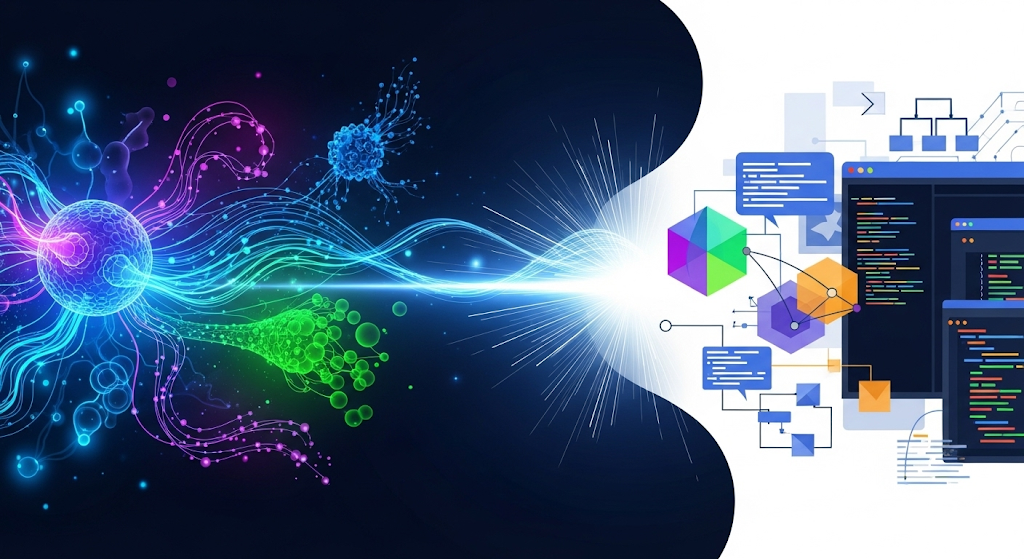How Generative AI Is Transforming Software Development Services?

Imagine if your engineering team could deliver high-quality applications in half the usual time. Sounds ambitious? With modern generative AI services, this is becoming a reality for forward-thinking businesses.
This isn’t about replacing human talent with machines. It’s about equipping your developers with AI-powered tools that can understand, generate, and collaborate. According to McKinsey, generative AI could boost software engineering productivity by as much as 45% — a figure that can turn development teams into a strategic growth engine.
From rapid prototyping to automated testing and even legacy code upgrades, generative AI is proving to be a game-changer for software development services. The real question is not “Should you use it?” but “Can you afford not to?”
What Is Generative AI in Software Development?
Generative AI isn’t a magic box that builds software while your team relaxes. Instead, it’s a powerful class of AI models — like OpenAI’s Codex and Google’s AlphaCode — that can:
-
Understand natural language descriptions of tasks
-
Analyze context within projects
-
Generate production-ready code, technical documentation, test cases, and more
What sets it apart from older automation tools is its ability to act as a collaborative co-pilot. A developer can describe a function in plain English, and the AI can write the initial version, suggest optimizations, or spot potential issues. Unlike rigid rule-based systems, it learns from vast codebases and adapts on the fly.
In short, generative AI services empower teams to think bigger, work faster, and build smarter.
Key Benefits of Generative AI for Development Teams
You don’t invest in new technology simply because it’s trendy — you adopt it because it drives results. Here’s how generative AI can reshape your software development services:
-
Faster Time-to-Market – Build, test, and deploy at record speed.
-
Boosted Productivity – Automates repetitive coding tasks so developers can focus on innovation.
-
Cost Efficiency – Get more output from your current headcount without constant retraining.
-
Reduced Technical Debt – AI-assisted reviews catch issues before they snowball.
-
Higher Developer Satisfaction – Less monotony, more creative problem-solving.
Bottom line? Generative AI can transform your development function into a high-leverage growth driver.
How to Introduce Generative AI into Your Development Process
1. Start Small with a Pilot
Choose a low-risk, clearly defined project where AI can make an immediate impact — like unit test generation, bug detection, or boilerplate code creation. This allows you to measure ROI without risking mission-critical systems.
2. Involve Developers Early
Your developers are your most important stakeholders. Engage them in tool selection, pilot design, and policy creation. Present generative AI as an ally, not a threat.
3. Create Governance Guidelines
Define what AI can handle, how generated code will be reviewed, IP ownership rules, and security compliance standards. Clear policies ensure safe and scalable adoption.
4. Build AI Literacy
Provide training in prompt engineering, validation of AI-generated outputs, and understanding AI’s limitations. The more AI-savvy your team, the more value you’ll extract.
5. Measure and Iterate
Track metrics like development time saved, bug reduction rates, developer engagement, and deployment speed. Adjust your approach for maximum long-term impact.
Why It Matters Now?
The combination of generative AI services with skilled human developers can dramatically improve how software development services are delivered. And the potential doesn’t stop at coding — the same AI models can support documentation, testing, and even AI chatbot development for customer-facing solutions.
By starting small, scaling strategically, and embedding AI into your workflows, you create a tech ecosystem where your team and AI collaborate seamlessly — delivering faster, smarter, and more reliable software.








